How to Get Rid of a Mothball Smell

You did it! You saved your clothing from becoming a moth-eaten heap. But now you’re dealing with the smell of the mothballs you used previously to stop moths and their larvae from wreaking havoc on your wardrobe. Obviously, you can’t go to work or out to run errands smelling like a musty attic. You need a solution to get rid of the mothball smell—and fast.
We’ve got you covered with tips and tricks for combating the pungent odor of mothballs. Whether it’s how to get mothball smell out of clothes, furniture, or your house, we have several solutions!
What Are Mothballs?
Mothballs are basically a chunk or small ball of pesticides that repel both clothes moths and humans alike—and for good reason. Once you lay mothballs out to deal with moth larvae, the chemicals will transition into a gas and mix into the air. The smell is enough to drive moths and other insects, as well as small pests like mice and rats, away from the space. Mothballs can also be used to soak up moisture and prevent mold growth.
Mothballs can be effective at what they do, but that doesn’t mean you want them to stick around for too long. Mothball odor is a terrible smell to have clinging to your clothing.
And we have some shocking news for you: a single mothball takes about 3-6 months to dissipate completely. If you put the mothball under fabric or someplace where there is no air circulation, it takes about 12 months to dissipate!
Literally epitomizing the statement “sticking around like a bad smell!”
The Chemicals in Mothballs
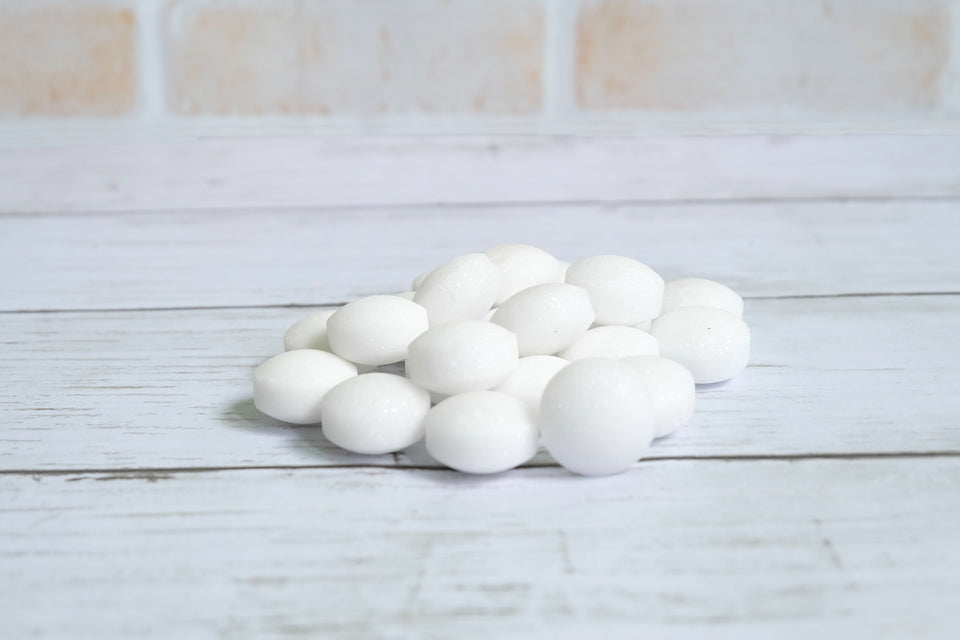
What do mothballs smell like? Most people would answer that question with different adjectives, but the consensus is that they smell unpleasantly pungent. And the smell only gets worse the longer you breathe it in. You don’t want to remain exposed to mothballs for too long, though. The fumes are very toxic, and you could become ill with prolonged exposure.
The reason mothballs are toxic is because of the chemicals they are made from. Mothballs are commonly made from naphthalene, but due to naphthalene being a highly flammable substance, more companies are switching over to paradichlorobenzene. Both are potential carcinogens, poisonous and may cause nausea, dizziness, restlessness, lack of appetite, fatigue, headaches, and more. So you don’t want that smell hanging in the air like an ominous cloud. You need to get rid of it.
Due to the harmful chemicals naphthalene and paradichlorobenzene found within these mothballs we DO NOT sell them and would advise against using them for your own safety.
How to Get Rid of the Mothball Smell
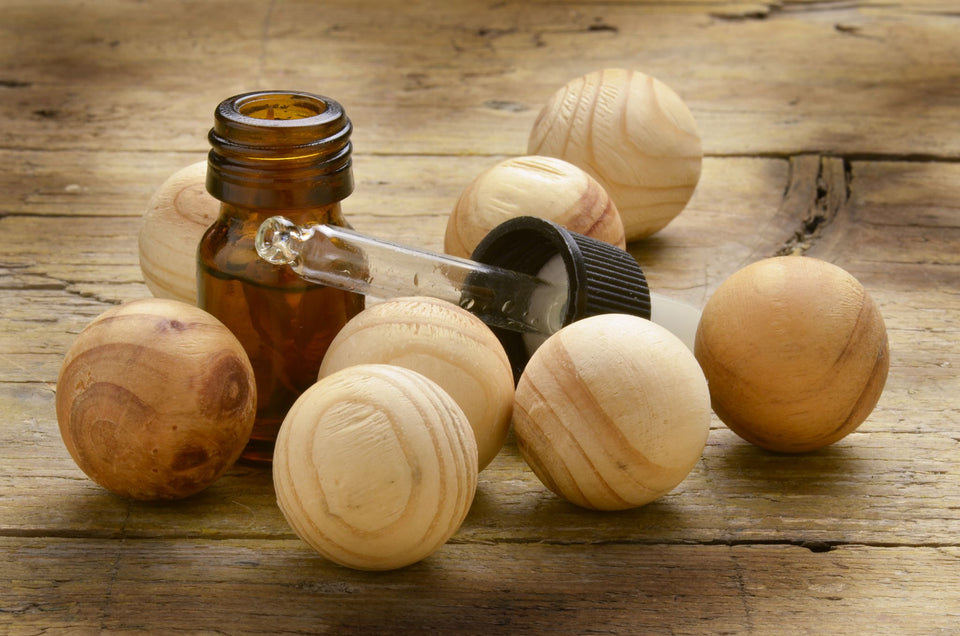
Does the mothball smell go away? The answer is yes, with some hard work. Getting the mothball smell out of your house can be a time-consuming procedure, but it is possible. Plus, the supplies you need to remove mothball smells are already available in your home, like a couple of cleaning rags, a spray bottle, and some white vinegar. You can even consider things like essential oils, activated charcoal, or an ozone machine to accelerate the mothball odor removal.
How to Get the Mothball Smell Out of House
- Ventilation. One of the best ways to oust the mothball odor is to air out your space. Open the windows and doors. Turn on ceiling fans. Let the air circulate around the room or house for a few hours.
- Wipe down surfaces. After you have removed the mothballs, spray the floor, counters, and other surfaces with a 50-50 mix of vinegar and water. You can use a rag or mop to wipe down the hard surfaces. Alternatively, you can mix together some water and baking soda for a similar effect.
- Spread around zeolite. If you have kitty litter in the house, you’re in luck. Cat litter is made from zeolite, a cluster of minerals with a unique structure that causes odors to stick to it. You can scatter around some cat litter on carpets, flooring, and even furniture to suck out the naphthalene smell or in common terms the mothball scent .
- Set out coffee grounds. Used coffee grounds have many uses, including deodorizing spaces. You can pour the coffee grounds into a small bowl then set it wherever the mothball smell is the strongest.
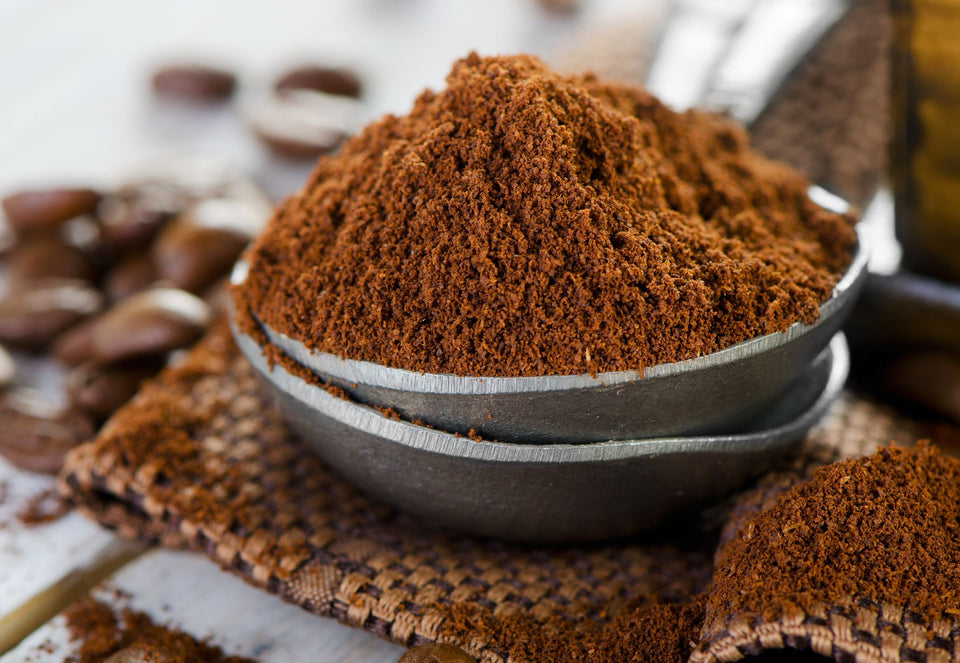
- A box of baking soda. Tried and true, baking soda is one of the best odor eliminators for your household. Place it anywhere the mothball scent is the strongest and let the baking soda work its magic.
How to Remove the Mothball Smell From Clothing and Shoes
When you have a clothes moth problem, mothballs are a convenient solution for getting the infestation under control. You stop the moth larvae from damaging your clothing, but the trade off? The chemical odor of mothballs in the fibers of your wardrobe.
Just one small caveat: Make sure you have removed the mothballs from the clothing before you start working to remove the odor. Mothballs may dissolve, but there will still be some intact pieces in the storage containers or within the folds of fabric. Make sure to dispose of the old mothballs correctly. Since they contain toxic chemicals, you should never leave them lying around. Put the remnants in an airtight container or separate trash bag. Wear gloves when handling the pesticide.
How to Get the Mothball Smell Out of Clothes
Once you’ve done that, you can safely move onto quickly getting rid of lingering fumes. Here are some ways for removing mothball odor from clothes:
- Make a lemon juice and white vinegar solution. In a small bowl, mix together some vinegar and lemon juice. Grab a clean cloth to dab the solution onto the places on the clothing or shoes where the mothball smell is the strongest.
- Hang your clothing outside. Just like airing out your home, a little exposure to fresh air will do wonders for your mothball-scented clothing. Shoes can also be placed outside, but keep them out of the sun.
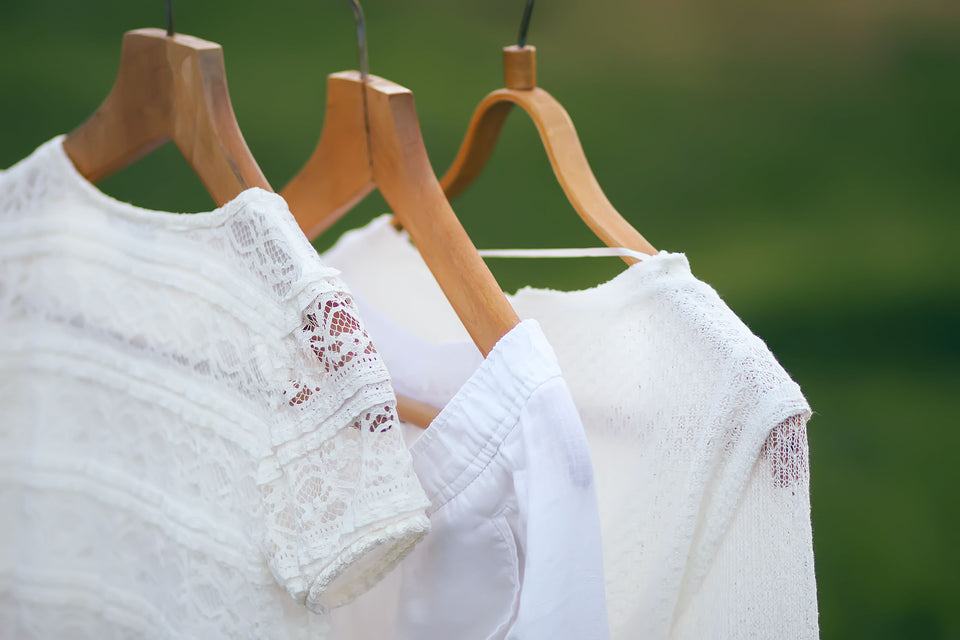
- Roast away the smell. Okay, maybe not roasting, but iron could do the trick. Ironing your clothing will usually disperse any odors, not just mothball ones. If your garments aren’t meant to be ironed, place them in warm sunshine. You may have to hang the garment for several days in the sun for the smell to fade.
- Try the “air fluff” setting. For fabrics that aren’t prone to shrinking in heat, you can pop them into the dryer and set it on a low heat setting. The result is just like ironing the clothes.
- Wash with Vinegar. Load your smelly clothing into the washing machine and pour in some vinegar. Skip the detergent and the fabric softener for now. Run the machine, letting the clothing and shoes soak in the vinegar-water solution. Afterwards, wash the clothes with your regular detergent and fabric softener. Either air out the clothing or toss them in the dryer to finish up. The mothball smell should be gone.
- Cedar or charcoal in the closet or drawers. You can purchase sachets or small planks to hang in your closet. Both cedar and charcoal will absorb stubborn odors. Not only that, but cedar also works as a moth repellent.
Have none of these methods worked for ridding your shoes of mothball smell? Use the same mixture of lemon juice and vinegar you did for clothing to wipe down the insides and outsides. Then, grab a paper pouch and pour in some cedar chips, coffee grounds, and baking soda. Pop the pouch inside the shoes and leave it there for about a week. The pleasant scent of coffee will cover the scent of mothballs, while the baking soda and cedar work to absorb the smell and any moisture.
How to Get Rid of a Mothball Smell in Furniture
Before you start spraying your upholstery to get out the mothball smell, consider the material. You may need a specialized odor eliminator to nix the mothball odor. For most carpets and fabric-covered furniture, you will want to use a wet-vac, since that offers the same level of ‘clean’ as a washing machine.
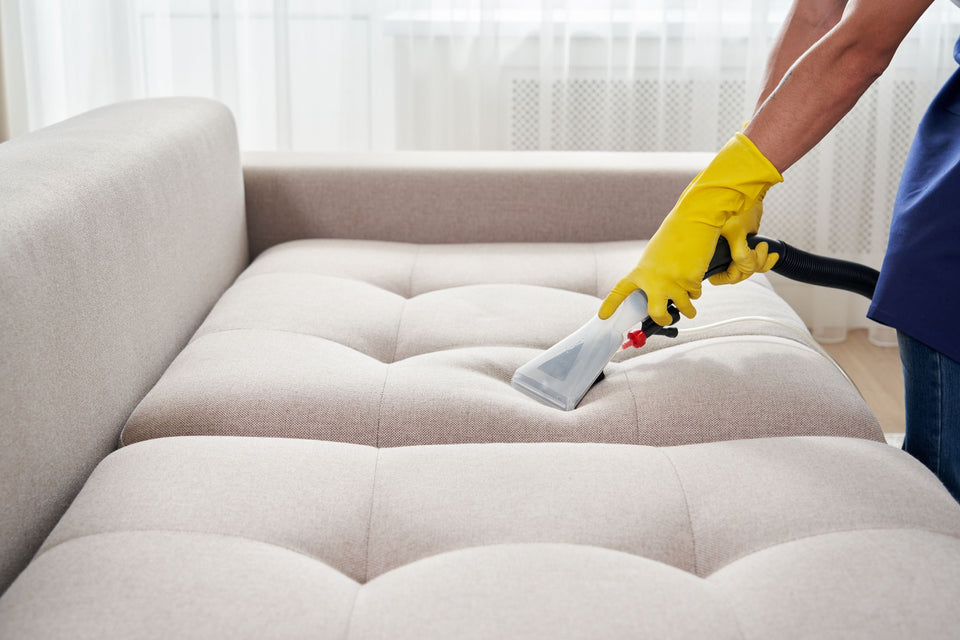
First apply a 50/50 mix of water and vinegar with a spray bottle. Then, go over the furniture as you normally would with the wet-vac. Not only do you get rid of any odors, but you can also remove dirt and pests, like fleas, bed bugs, and moths.
Alternatives to Mothballs
Next time you want to stop clothes moths from chewing holes in your sweaters and coats, consider using an alternative to mothballs. One of the best natural repellents is cedar wood. You can purchase a cedar chest or wardrobe to store seasonal clothing and shoes when you don’t need them. Red cedar also has a fantastic aroma. Optionally, you can purchase cedar chips and make something like a moth-repellent potpourri.
Other methods for repelling moths that don’t stink and make you sick include essential oils. Lavender, mint, and cloves all repel insects. You can add some essential oil diffusers or air fresheners to a room or spray some onto your clothing. Start watering your windowsill herb garden again. Because basil, spearmint, rosemary, and sage drive away moths as well.
If those options don’t work for you, storing clothing inside garment bags or storage containers may also prove effective.

FAQ’s About Mothball Odor Removal
Many people have the same questions about ridding their home of mothball smell once and for all. Here are the most common mothball-related questions:
Will the mothball smell go away? How long does a mothball smell last?
It usually takes a couple of months for the physical mothball to completely dissipate when not exposed to air. The smell, however, may remain in your home for months or years after the last used mothball. Fortunately, the scent of mothballs is not a permanent scent. If you want to get rid of the mothball smell, you will need to clean the affected space and fabrics. When you take action, you could completely clear the air within a few hours or days.
Is the mothball smell bad for you?
Although mothballs have been determined as safe for general use, the fumes can cause health problems. Even handling mothballs can cause your hands and eyes to itch and burn. Inhaling the fumes will exacerbate this sensation and may lead to headaches, breathing difficulties, nausea, and dizziness.
As long as you take precautions and put mothballs in an enclosed space, you shouldn’t have to worry about breathing in enough fumes for the chemicals to affect you.
How do you get the smell of mothballs out of furniture?
No one loves the smell of mothballs. To get rid of the smell, you should first get rid of the old mothballs. You can then use white vinegar and baking soda on furniture, carpets, and curtains to remove the smell of mothballs.
Are mothballs toxic to breathe?
Yes. Mothballs are manufactured from chemicals that are toxic to humans and animals. The moment you smell mothballs, you are being exposed to these dangerous chemicals. Sometimes, children and pets can mistake mothballs for food and will digest them. This can cause severe effects that should be taken care of immediately.
Some of the chemicals used in mothballs, such as naphthalene and paradichlorobenzene, may cause reversible side effects when inhaled, including nausea, headaches, coughing, eye and nose irritation. Extended exposure may result in kidney and liver damage. Naphthalene may also cause hemolytic anemia and is a possible carcinogen.
Will dry cleaning remove the scent of mothballs?
The mothball smell tends to linger. If you worry that you won’t be able to successfully remove the mothball smell from clothing, then you can seek out professional assistance. A dry cleaner should be able to get rid of the smell of mothballs.

Why Remove the Smell of Mothballs?
Eliminating a mothball smell can be infuriating and tricky. Mothballs are definitely useful when you are at your wits end with clothes moths. But mothballs smell horrible and are also dangerous when left around your home for long periods. It is best for you to remove the mothballs and their insidious odor. Fortunately, while the smell tends to linger, it is easy to remove with things like vinegar, baking soda, cedar, and a washing machine.
About MothPrevention
MothPrevention® speak to customers every day about their clothes moth issues - clothes moths are a species that are ever increasing and that can cause significant damage to clothes, carpets and other home textiles.
To date, we’ve helped over 250,000 customers deal with their moth problems. We have developed professional grade solutions including proprietary pheromones and trap design, not available from anybody else in the USA.





